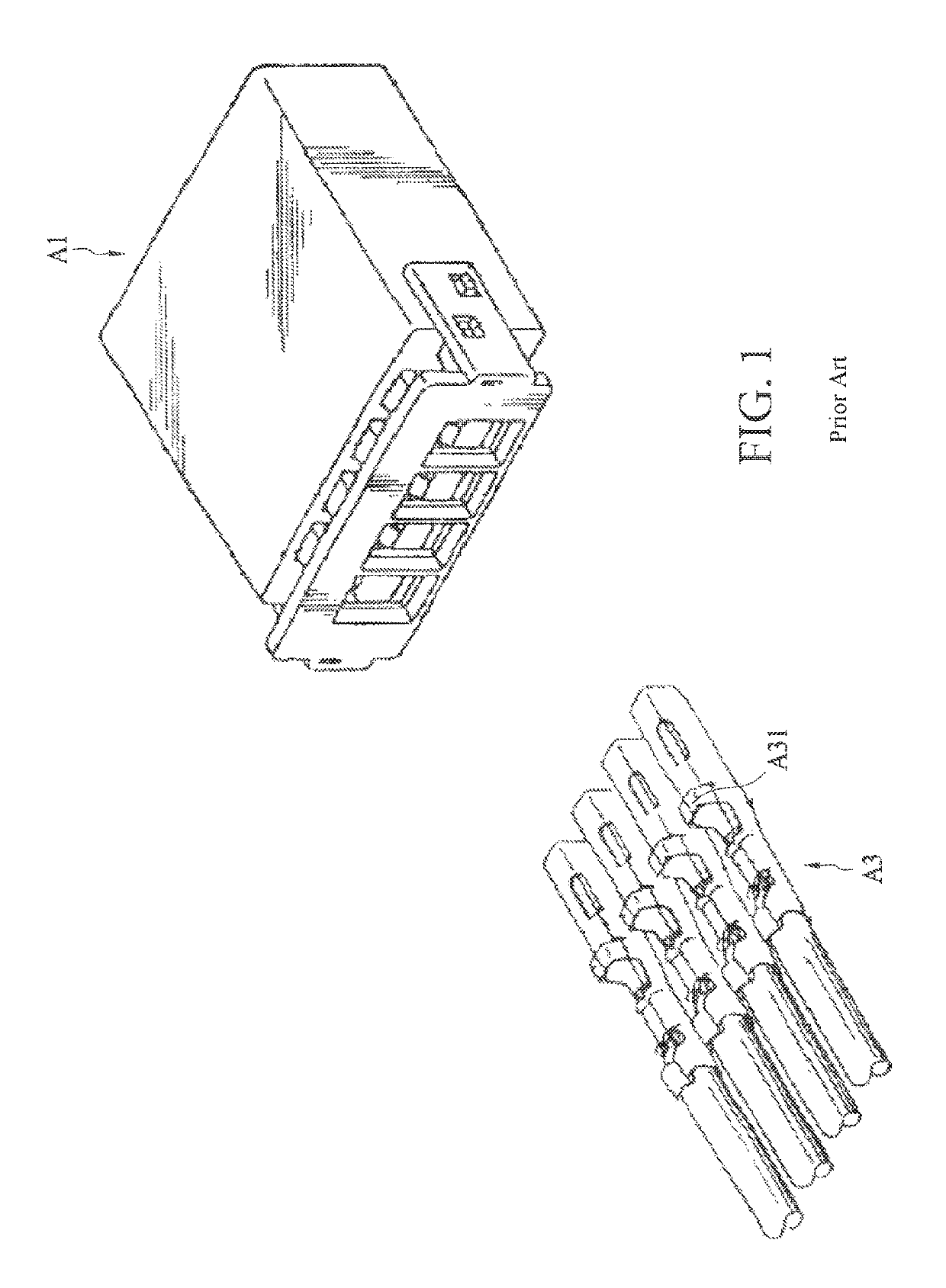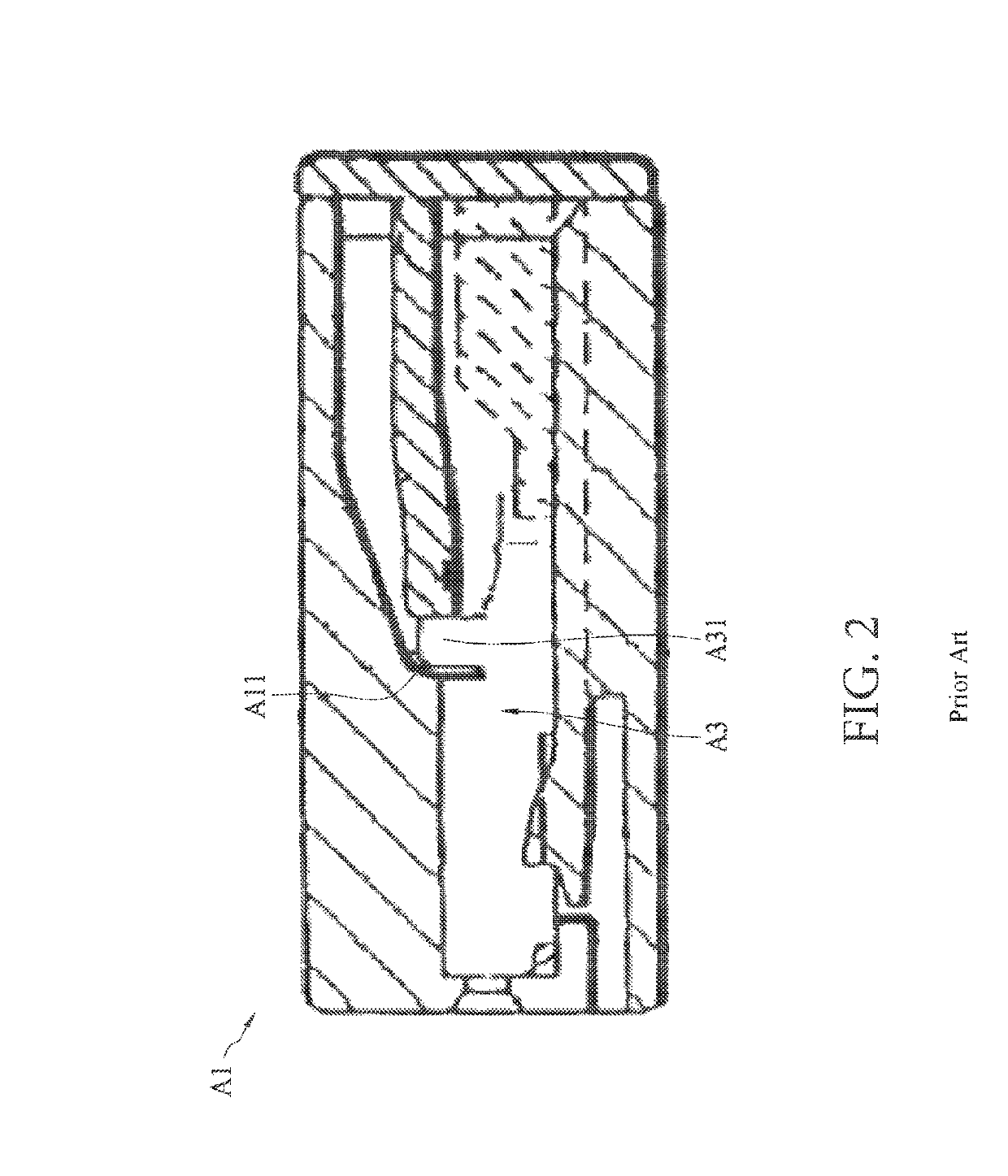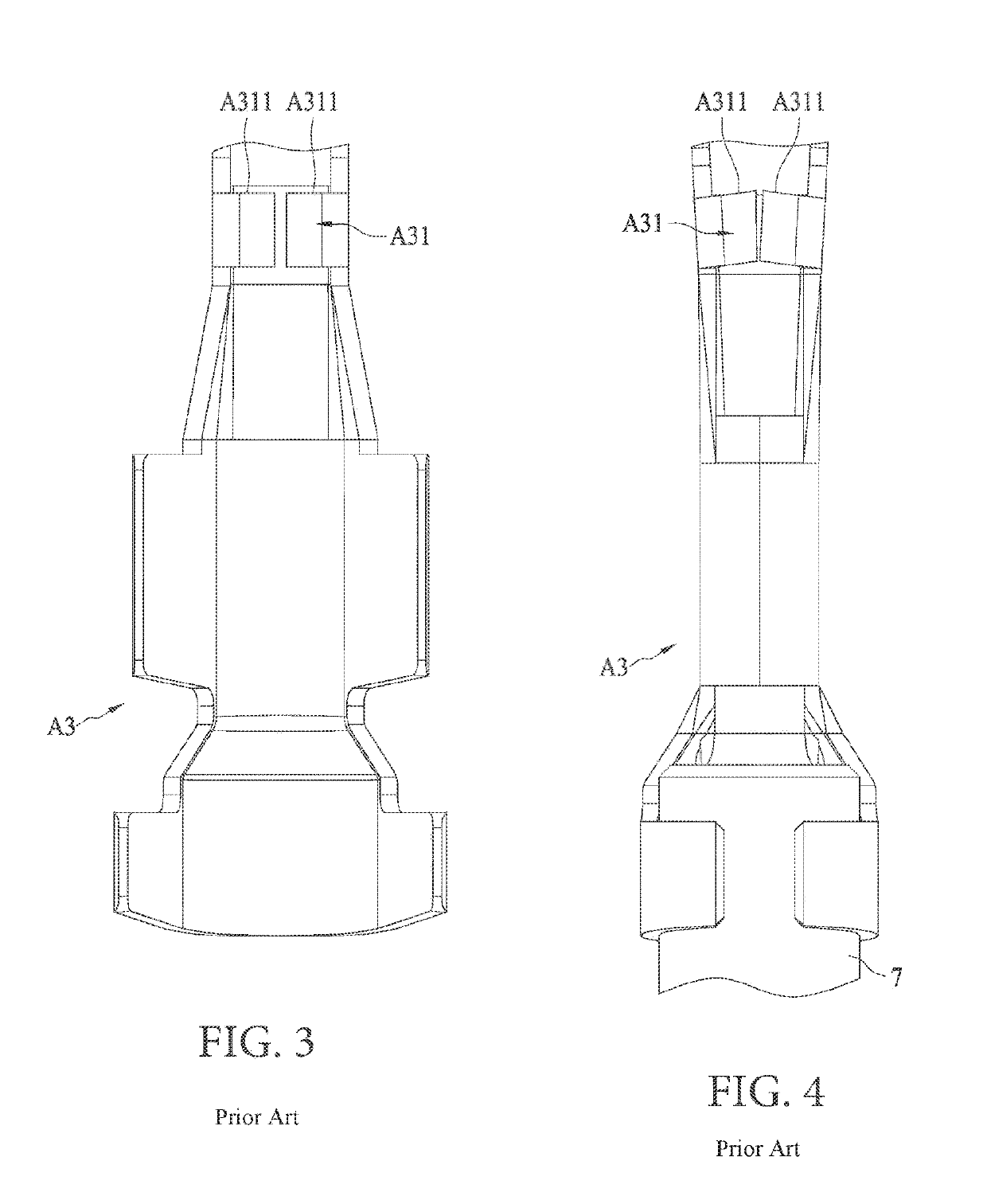Power connector
a technology of power connectors and connectors, applied in the direction of coupling contact members, coupling device connections, connections effected by permanent deformation, etc., can solve the problems of increasing manufacturing difficulty, poor difficult pressing of handle bb>112/b>, so as to increase the increase the mechanical strength and flexibility of lock assembly, the effect of easy assembly or disassembly
- Summary
- Abstract
- Description
- Claims
- Application Information
AI Technical Summary
Benefits of technology
Problems solved by technology
Method used
Image
Examples
Embodiment Construction
[0049]The following disclosed content provides various embodiments or exemplifications used to implement various features of the present disclosure. Specific examples of elements and configurations are described as follows, so as to simplify the disclosed content of the present disclosure. Certainly, these are merely examples, and are not used to limit the present disclosure. For example, in the following description, that a first feature is formed on or above a second feature may comprise an embodiment that the first feature and the second feature are formed to directly contact with each other, may also comprise an embodiment that other feature is formed between the first feature and the second feature, therefore the first feature and the second feature do not directly contact with each other. Moreover, the present disclosure may allow a symbol and / or a character of an element to be repeated in different examples. The repetition is used for simplification and clearness, but is not ...
PUM
 Login to View More
Login to View More Abstract
Description
Claims
Application Information
 Login to View More
Login to View More - R&D
- Intellectual Property
- Life Sciences
- Materials
- Tech Scout
- Unparalleled Data Quality
- Higher Quality Content
- 60% Fewer Hallucinations
Browse by: Latest US Patents, China's latest patents, Technical Efficacy Thesaurus, Application Domain, Technology Topic, Popular Technical Reports.
© 2025 PatSnap. All rights reserved.Legal|Privacy policy|Modern Slavery Act Transparency Statement|Sitemap|About US| Contact US: help@patsnap.com



